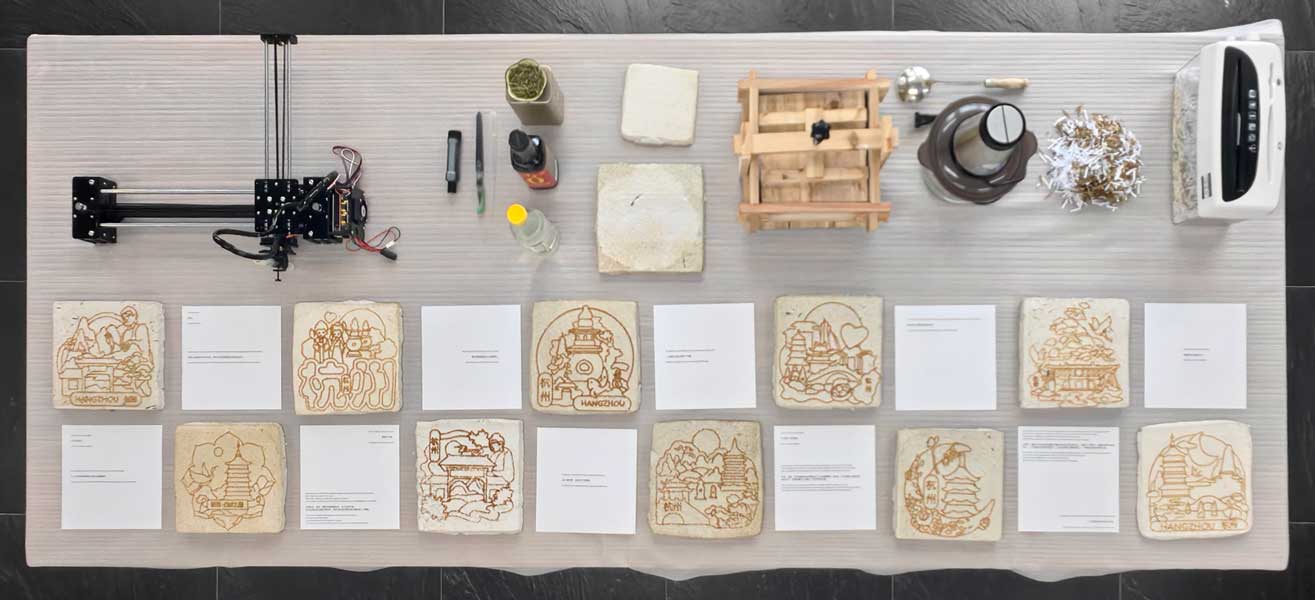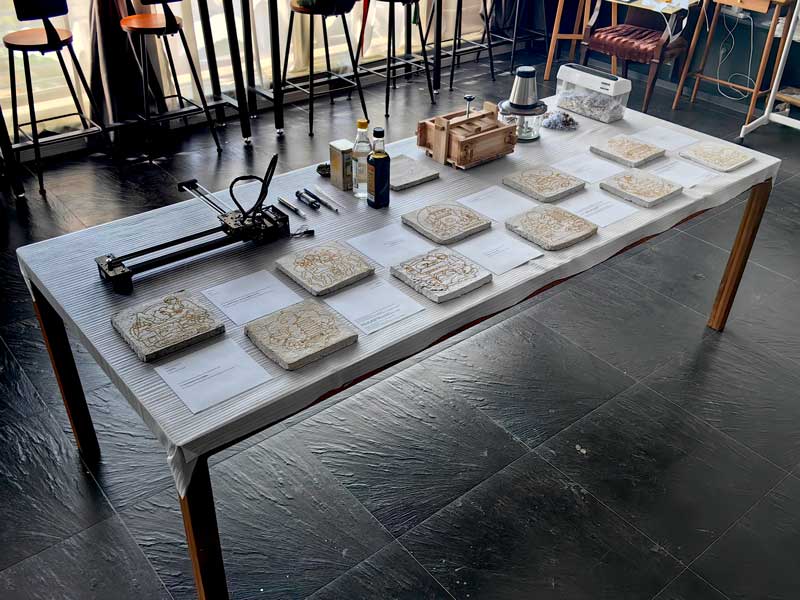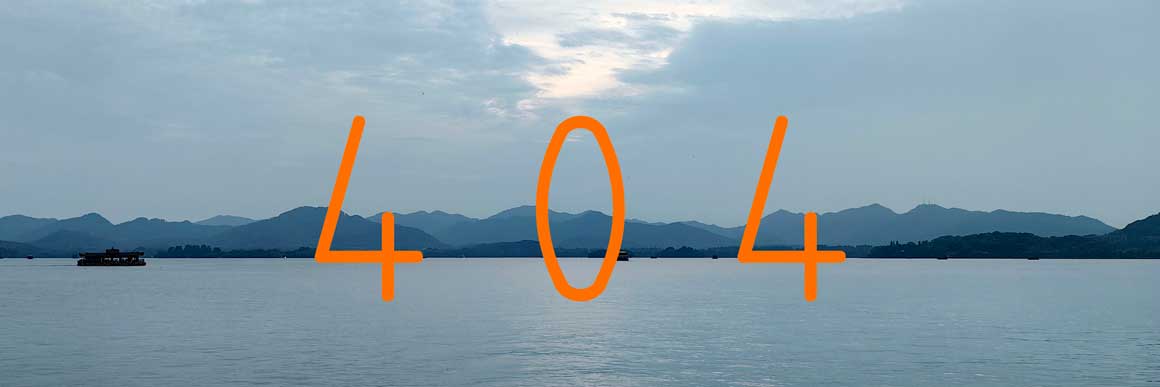

AN EXHIBITION WITHOUT ANY INTEREST
Artist residency from August 11 to 24, 2026
Espace 404 – Hangzhou – China
Today, there's a proliferation of exhibitions promoting brands or decorative works. We visit them quickly. There's nothing to understand. Visitors are simply asked to validate, like a "like" on social media. That's what seems to interest people: judging and evaluating without expertise.
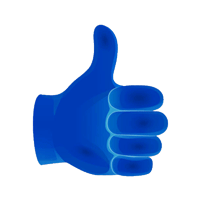
I wanted to focus on a project that question in order to create an exhibition to question visitors.
Two important areas of research in China are artificial intelligence and environmental issues, including the sustainability of consumer products.
Most research projects are moving in the same direction. How to win the race for artificial intelligence, how to produce in a circular economy. Few projects go against the grain. What interests me is not artificial intelligence or the environment. These are concepts that are already partly intrinsic to our behavior. What interests me is how we adapt to this new system. How our roles and habits evolve because of new technology or new awareness.

If we assume that in the 20th century, the discovery of photography revolutionized our relationship with images while motivating some painters to rethink their work. This led to an avant-garde of painting, Impressionism, and even abstraction.
What will become of creative brain activity in a society conquered by AI?
The goal is not to resist new technologies or AI, but to reimagine coexistence. Is it possible to develop new creative methods using AI without being at its mercy? Using AI as a springboard to further propel our creativity?
Today, we are quickly satisfied with AI's responses. Lacking a way to fully tame them, we are tempted to accept a certain mediocrity.
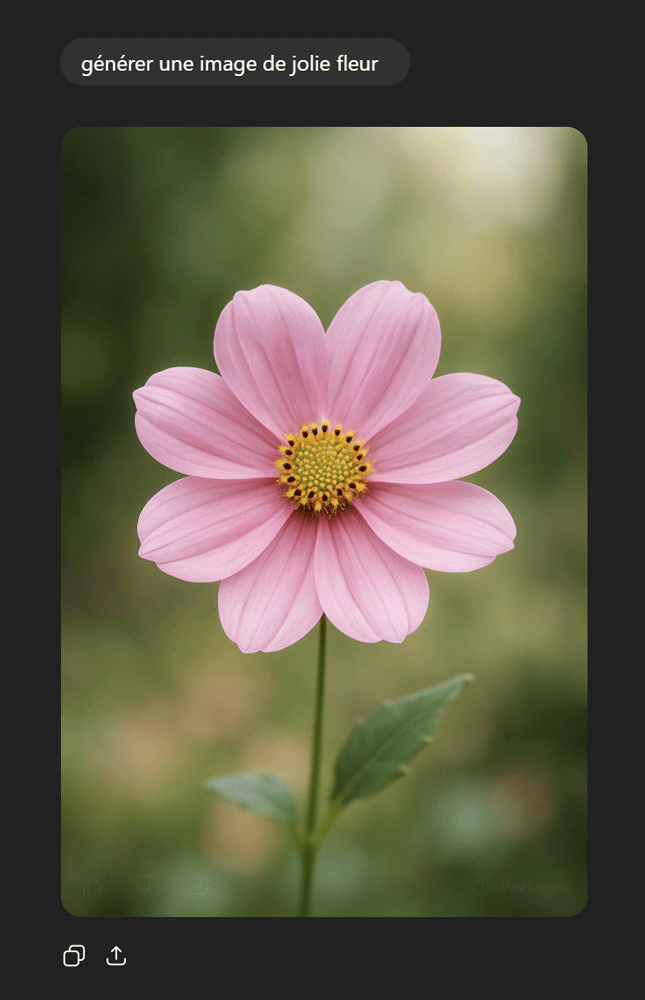
I imagined a process that uses generative AI and new technologies while also considering manual labor. I propose setting up a production line for artworks representing Hangzhou.
1-
I recovered paper from my sketchbooks and waste from the university's design department.
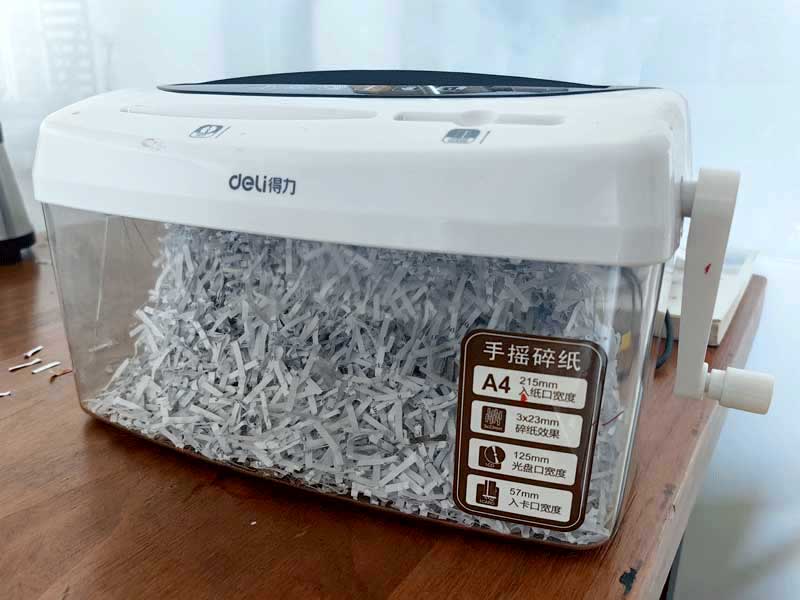
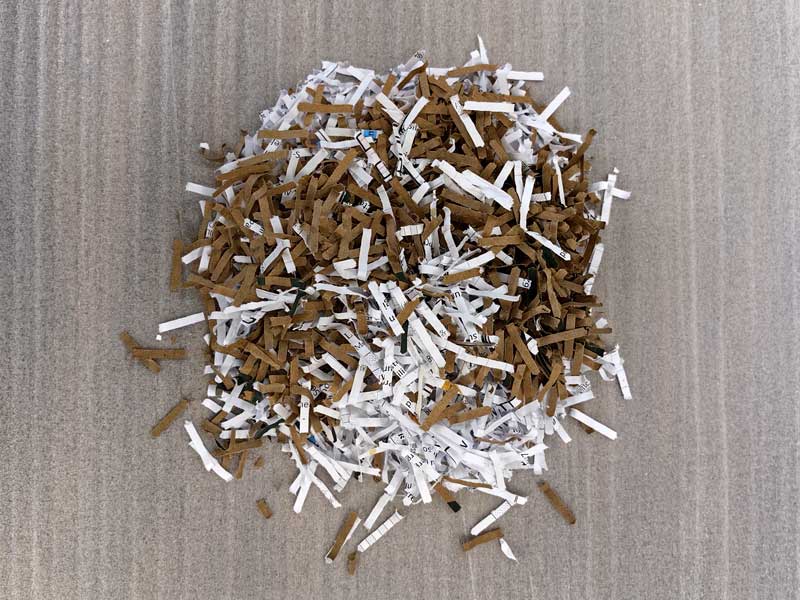
2-
I shredded the paper using a reclaimed office paper shredder.
I blend the paper confetti with hot water in a reclaimed food processor. This dissolves fibers, glues, and inks.
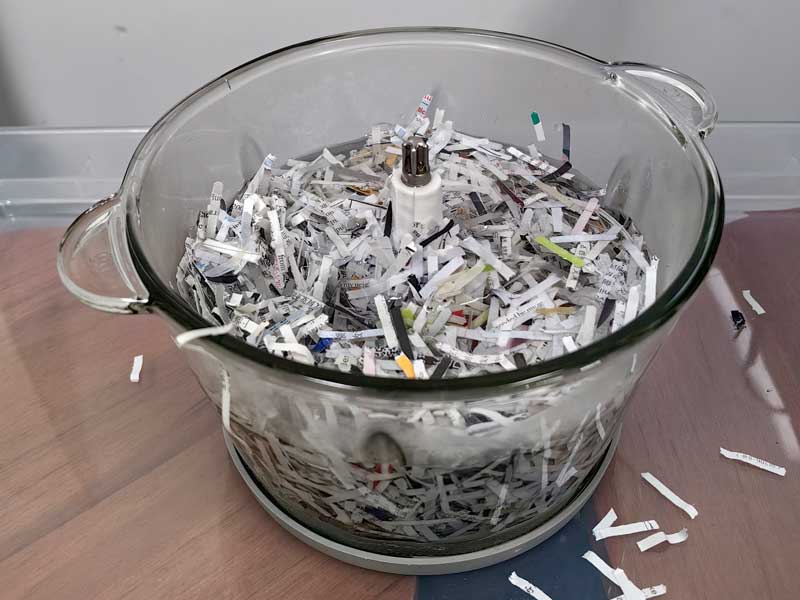


3-
I first built wooden molds, then I settled on a 20cm tofu mold because the mechanism was identical and allowed me to mold 20cm square bricks.
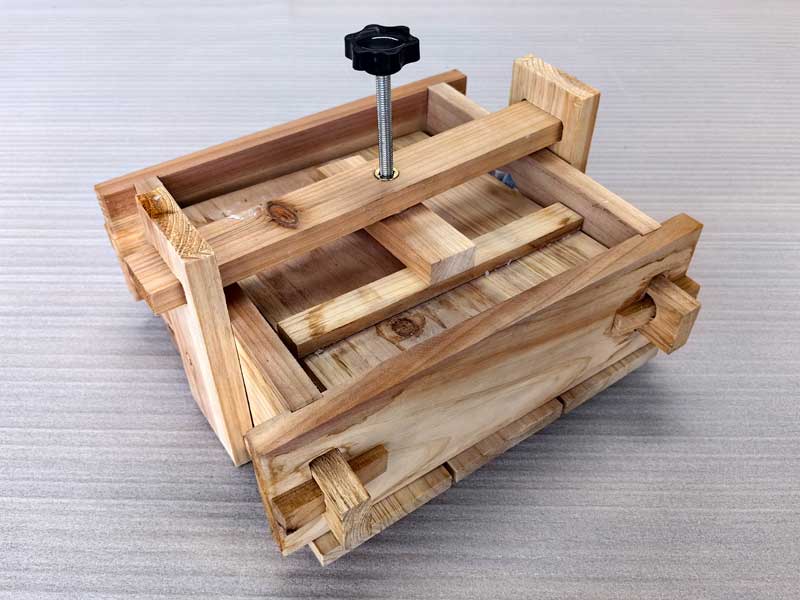
Compressing the paper paste in the mold eliminates the need to add any other additives, resulting in a compact and solid product once dried. In two days, in a draft, the block of paper is dry and solid. The fabric in which I place the paper paste allows for a grain on the surface of the brick.
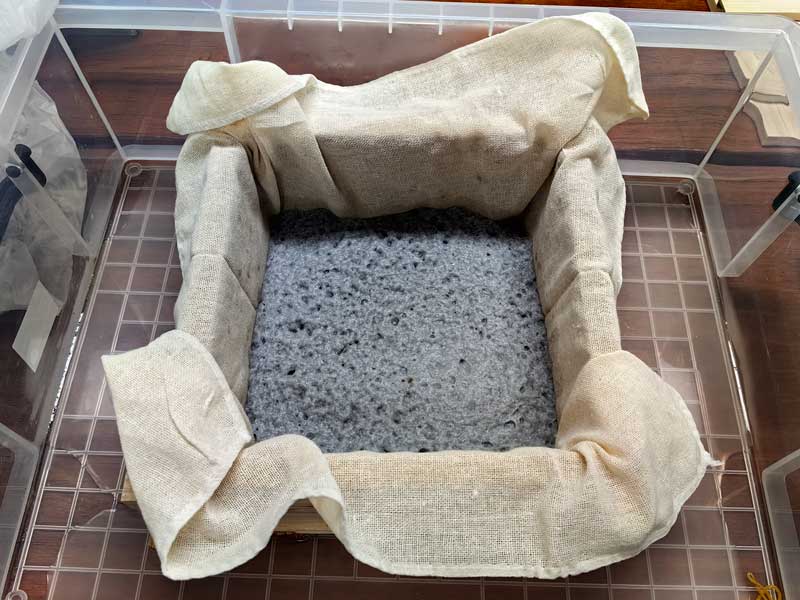
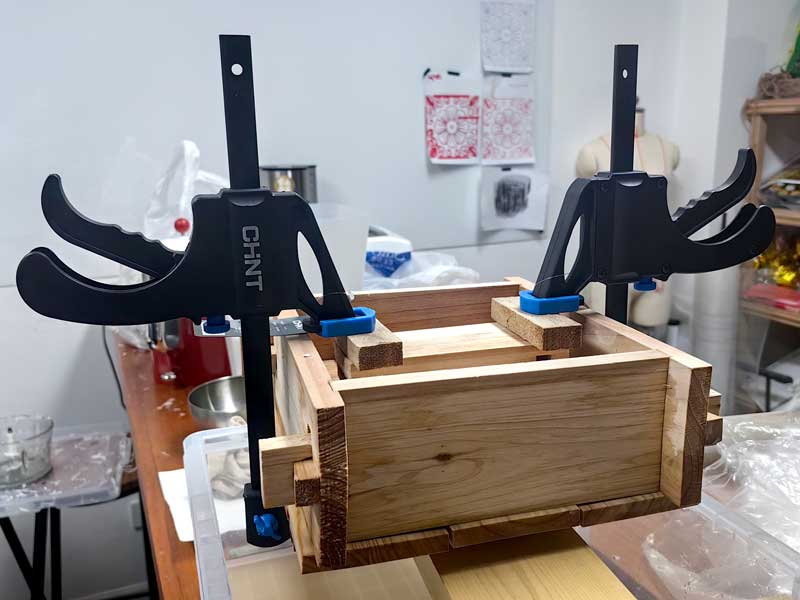
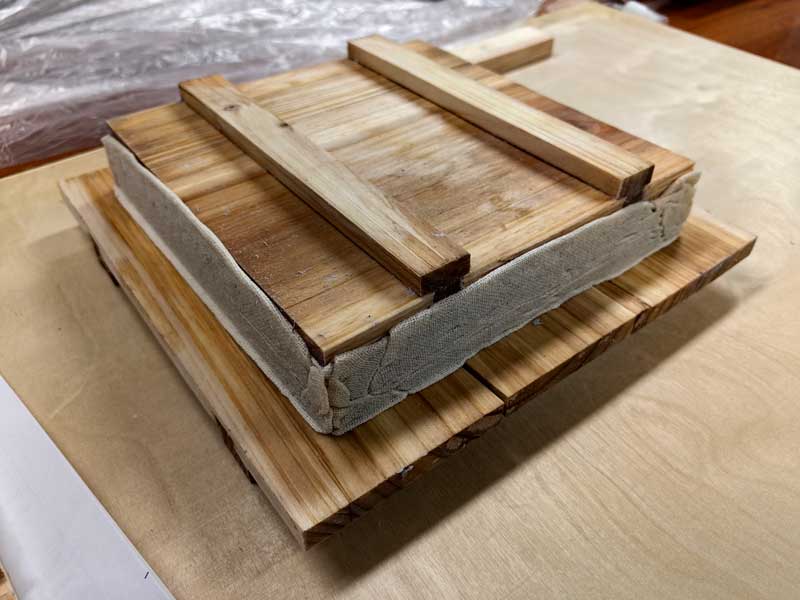
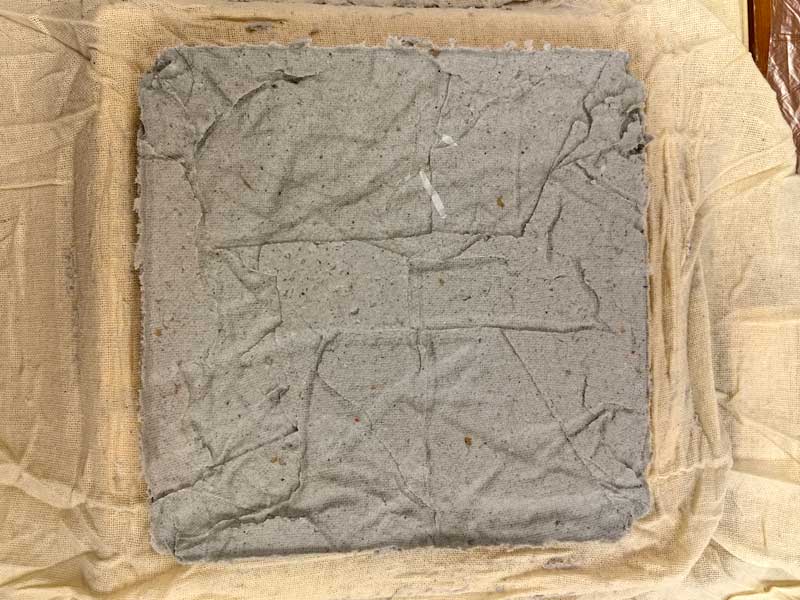
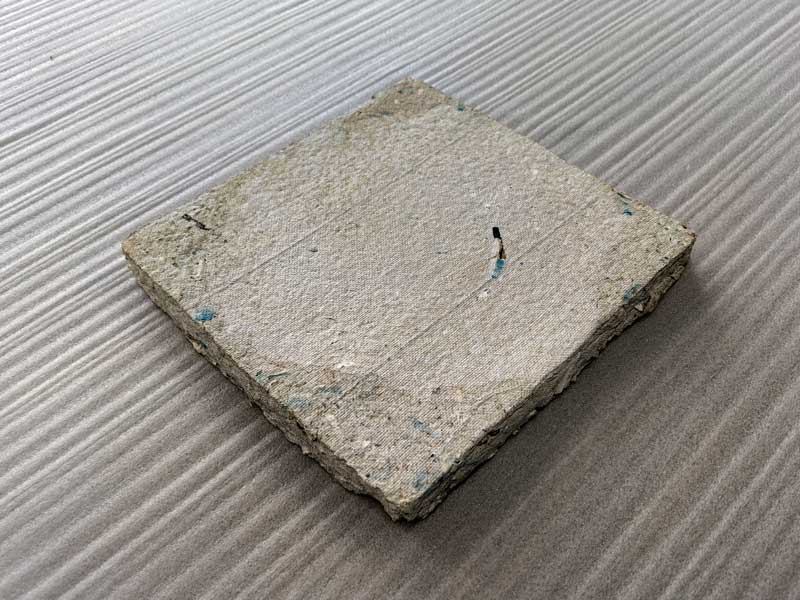
4-
In parallel, I experimented with several recipes for extracting ink from Longjing green tea produced in Hangzhou. A mixture of macerated tea and various vinegars produces a liquid dark enough for writing.
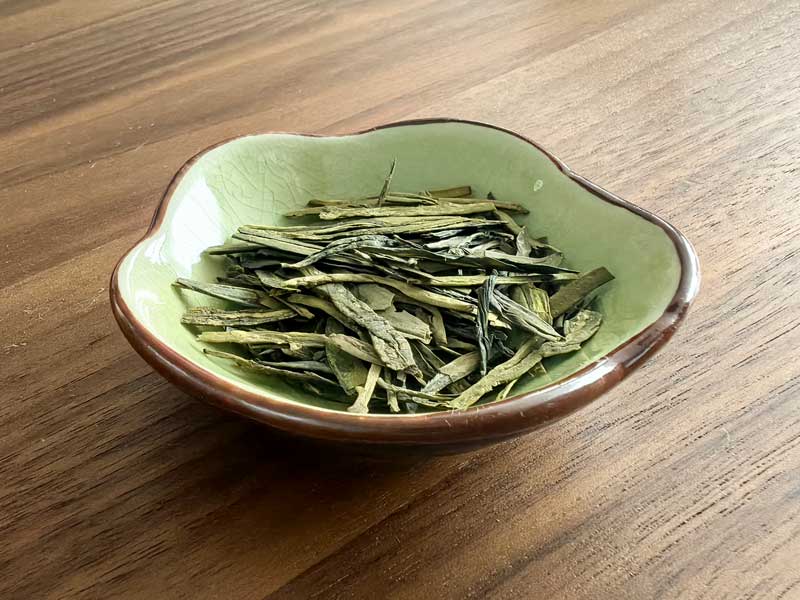
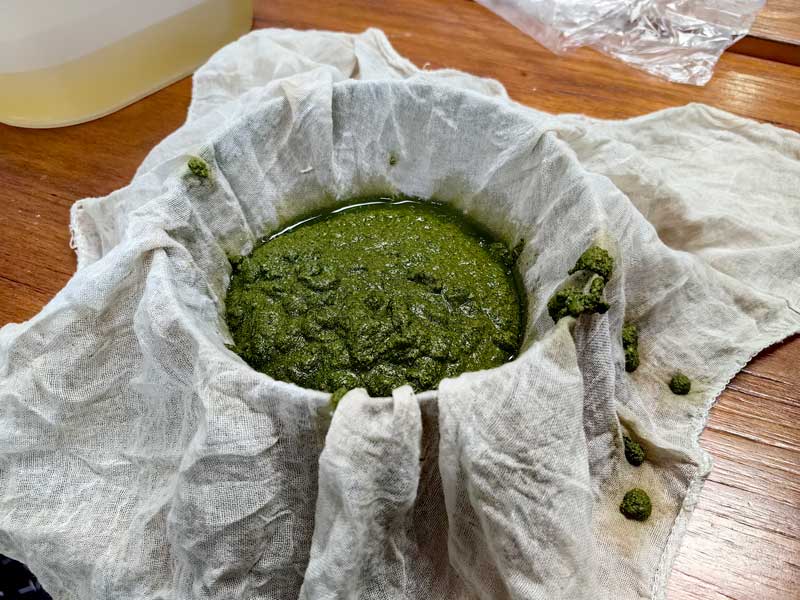
The liquid is then placed in an empty felt-tip pen.
I've experimented with several types of writing instruments. In a longer project, we could improve the ink and design a pencil using recycled felt, for example.
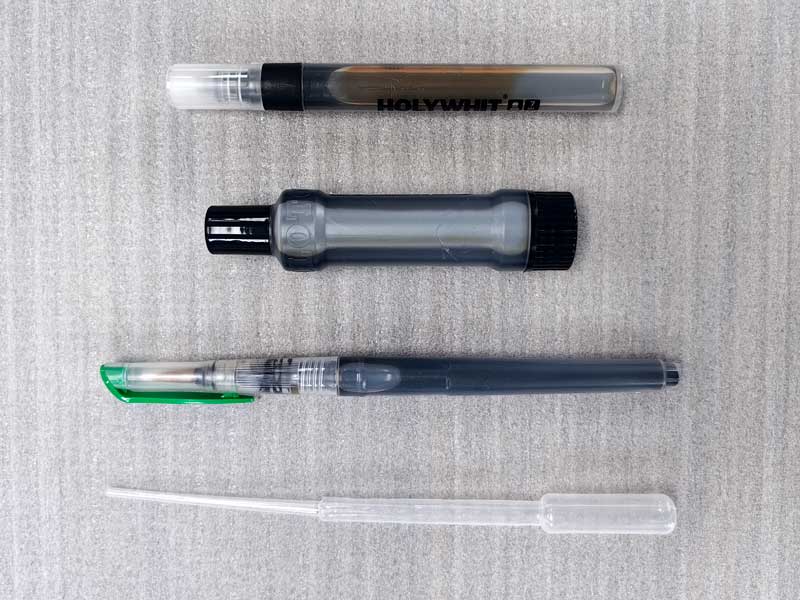
5-
For the creation of the artwork representing Hangzhou, I considered using an AI-based process.
The city of Hangzhou already produces a set of marketed commercial visuals in the form of magnets representing the city's main tourist sites. Iconic places that tourists shouldn't miss. We often consult the top 10 places to visit before traveling to a tourist destination. This strongly influences the itineraries of people visiting Hangzhou. Our itineraries are now planned by social media and commerce.
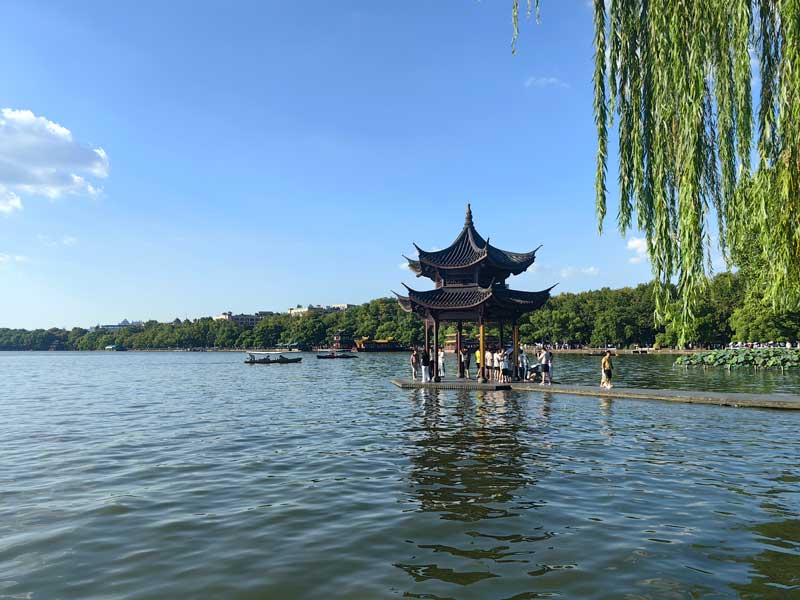

6-
I photographed 10 magnets in Hangzhou stores.
Using software, I extracted vector plots representing Hangzhou from these photos. Then I converted these documents into code to guide an Arduino plotter I built. This plotter, a robotic arm, accommodates the tea-based ink pen.
The plotter and felt-tip pen system produces a thick, irregular trace that looks like hand-drawn lines.
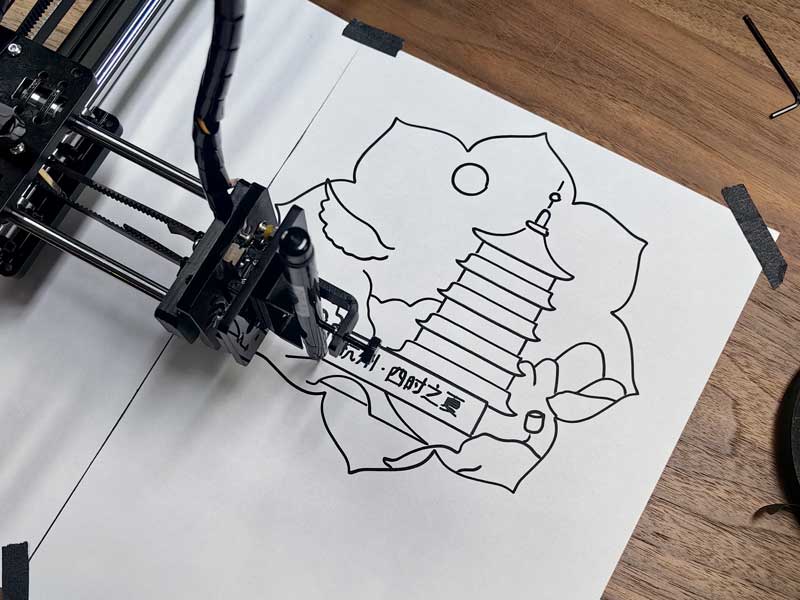
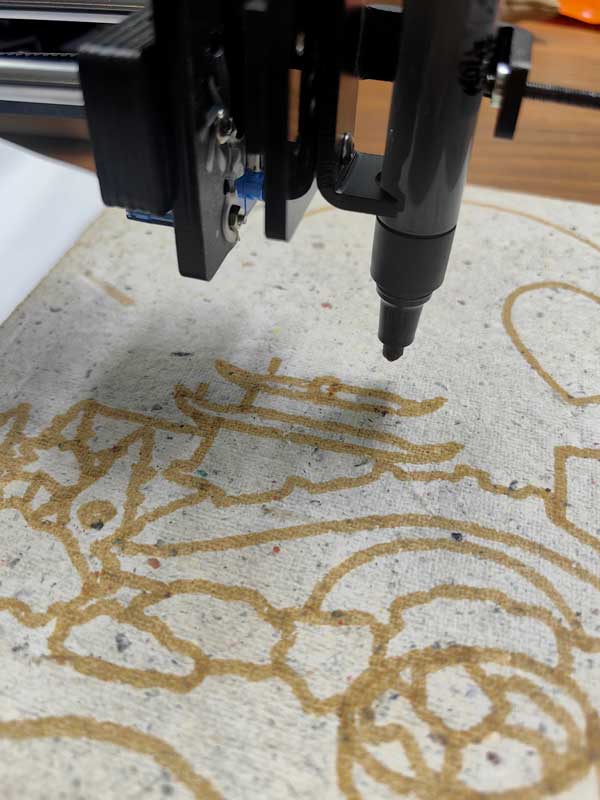
7-
The result is a series of 10 recycled paper blocks with 10 different views traced with a plotter and tea ink.
The visuals themselves are of little interest. The work is more in the approach and the questions it raises than in what is presented.
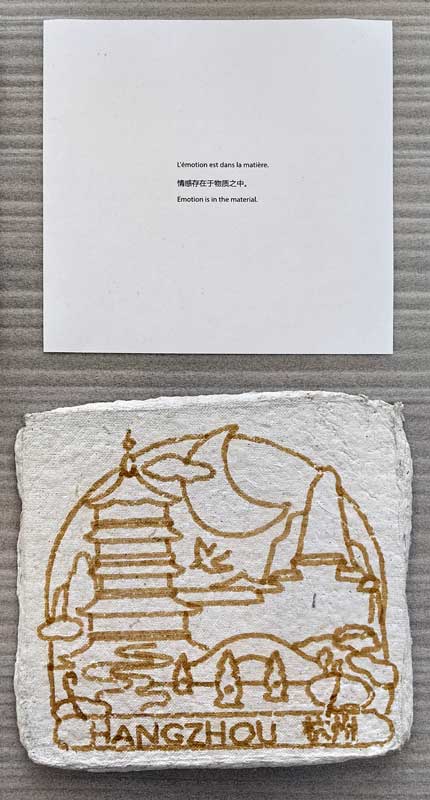

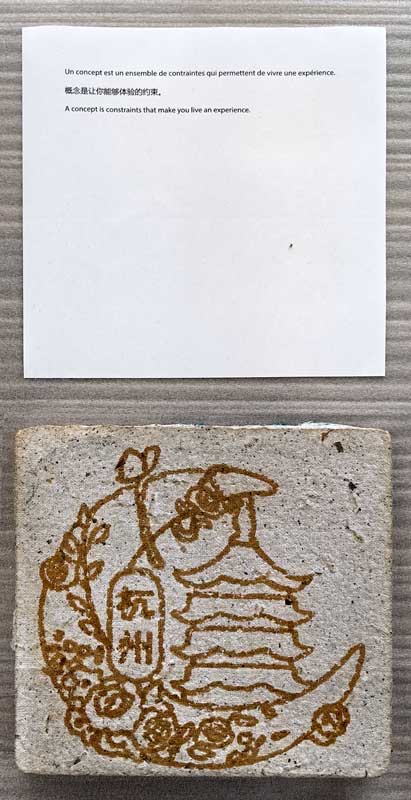

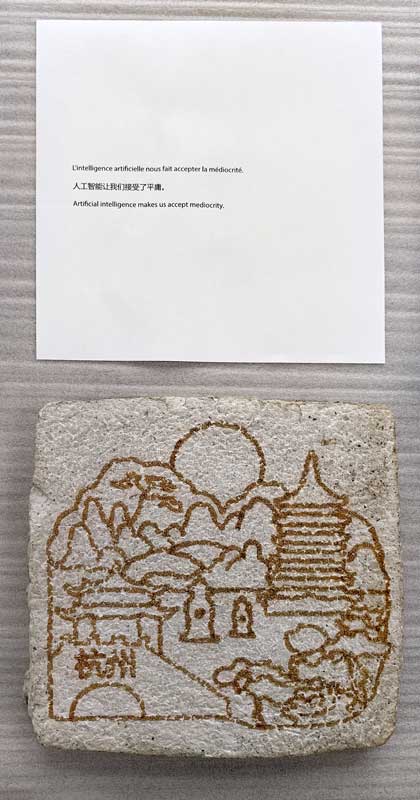
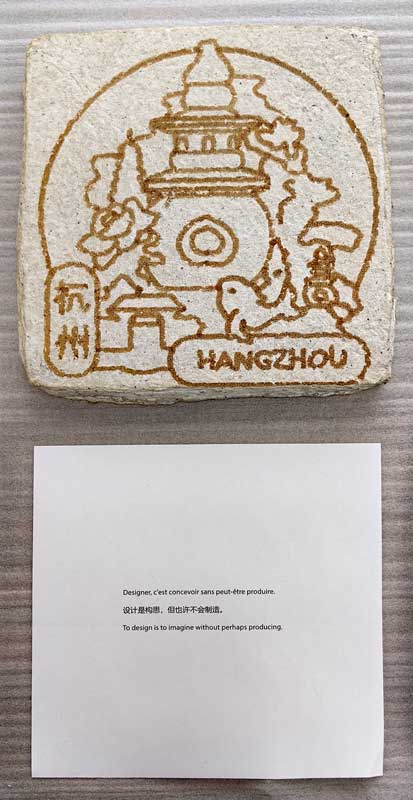
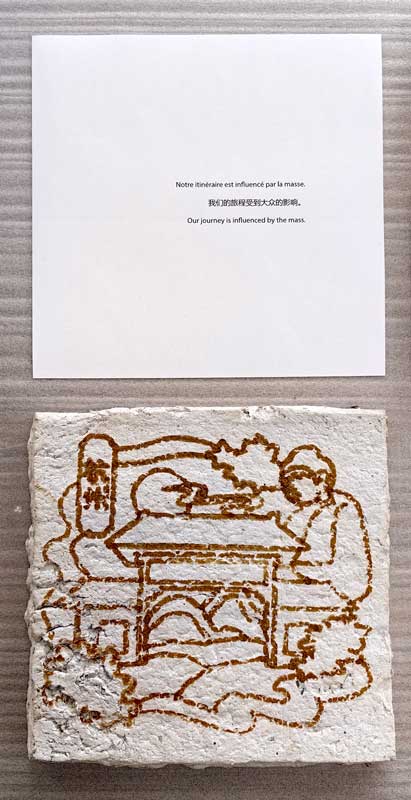
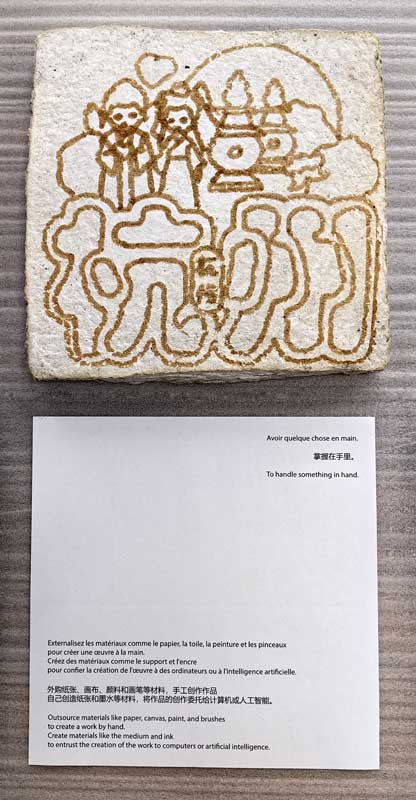
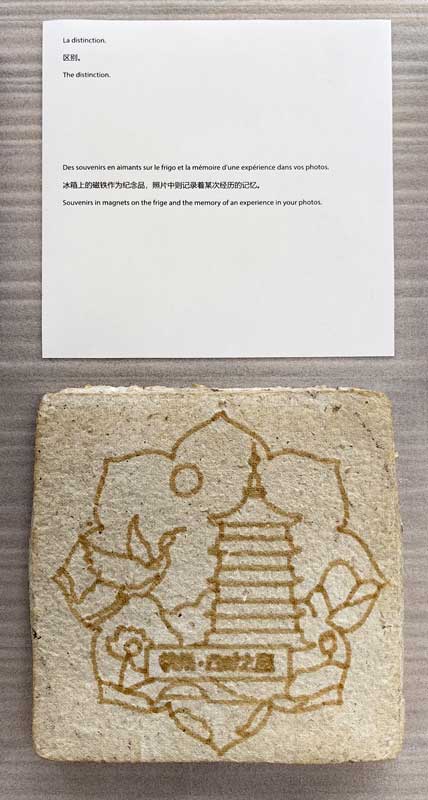
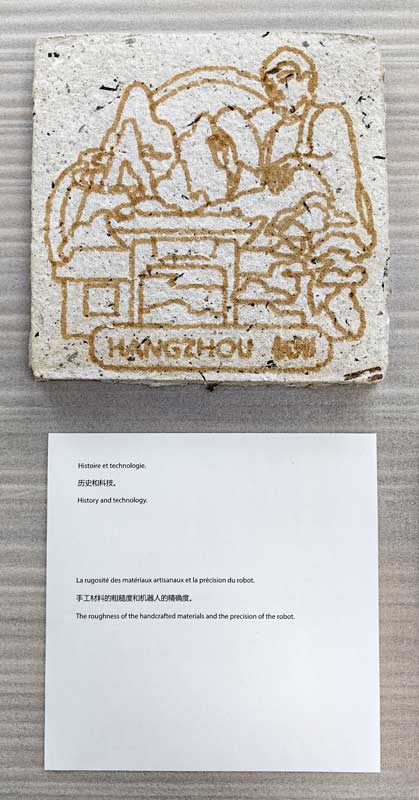
8-
Next to the pads of paper, I wrote down sentences that came to me while preparing the project.
These aren't questions but sentences that question.
